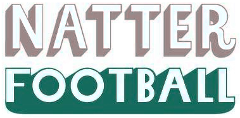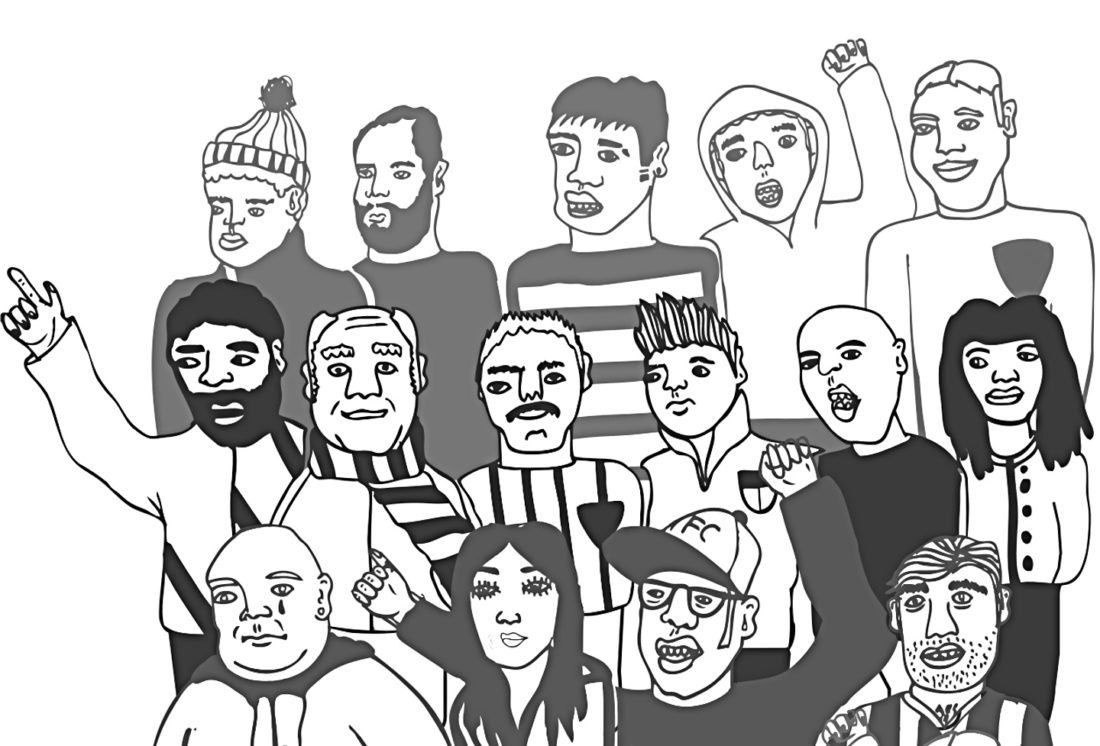You may have read books or watched documentaries about North Korea; the Kim dynasty, nuclear weapons, famine, etc.. Fascinated to find out more; one thing scarcely mentioned about the country was sport. I wonder if North Korea have a domestic football league? How does the free moving game of football happen under a “Juche” ideology?
Korea separated in 1945 when the Japanese empire dismantled after World War Two. The south controlled by the United States of America, Russia installing a communist regime in the north, later ceding influence to China.
The capital city, Pyongyang, appears to be a well maintained area. Around 80% of the football matches I’ve seen footage of are played in the capital at either Rungrado 1st of May Stadium, with a capacity of 114,000 which is identifiable by its 16 arched roof, and being on a island in the middle of the Taedong River, or Kim Il-sung Stadium, a circular build, used more frequently and holding 50,000.
Pyongyang is home to the six teams; Hwaebul who have a 5,000 capacity at the Hwaebul Stadium, Kigwanch’a, April 25 and Sobaeksu all share the 30,000 Yanggakdo Stadium, Kyounggong’op have the 10,000 capacity City stadium, Pyongyang City’s home ground is Kim Il-sung Stadium. Ryomyong is a “new town” as created in Pyongyang under Kim Il-Sung. It is unclear where they play home matches as there is no record of a stadium within the Ryomyong area. They may share one of the local grounds.
Just outside of Pyongyang is Namp’o (original location of April 25), on the north west coast is the City of Sinuiju, home to Amrokkang, on the south west coast is Sariwon home of Rimyongsu. On the isolated and rural north east corner is Rason, home of Songbong, and on the east coast Kimch’aek, home to Wolmido. These are the teams that make up the North Korean top flight; although there are two teams i am unable to locate; Chebi and Kalaegi.
Each team represents, and is affiliated to, various sections of the state;
Sobaeksu – Korean Peoples Army
April 25 – Koreans Peoples Army
Chebi – People’s Army Air Force
Kalaegi – Korean Peoples Navy
Amrokkang – Ministry of Peoples Security
Rimyongsu – Ministry of Peoples Security
Hwaebul – Kimilsungist-Kimjongilist Youth League
Kigwanch’a – Korean State Railway
Kyounggong’op – Ministry of Light Industry
Pyongyang City – Korean Workers Party & Pyongyang City Hall
Songbong Worker – Peasant Red Guard
Wolmido – Ministry of Culture and Fine Art
Ryomyong – New Town
The 2017/18 season saw the top division “rebrand” as DPR Korea Premier Football League and includes the thirteen teams above. The most successful team are called April 25 (originally the Central Sports Training School Sports Club, then renamed February 8 Sports Club, after the date on which the Korean People’s Army was established, then again at the orders of Kim Jong-il, changed to April 25; after the date Kim Il-sung formed his anti-Japanese guerrilla army). Seventeen league titles since 1985 (when records began), they qualified for the Asian Club Championship first round in 1986, semi final league 1988, finished in third place in 1990 and for the last two seasons qualified for the AFC Cup – Asian Champions League. It is during these games that the nation allows football to be played at the Rungrado 1st of May Stadium.
April 25 are at the centre of team rivalries in the DPR Korea Premier Football League, their main rival Amrokkang, belonging to the Ministry of People’s Security, sees the professional contest spill out on to the pitch. They also have a rivalry with Pyongyang City, known as the “Pyongyang Derby”. The league’s other rivalry is between Kigwancha and Sobaeksu, (powerless to the might of April 25) over the shared Yanggakdo Stadium.
Games in North Korea often take place to a diverse range of activities and entertainment, in a game between Pyongyang City Sports Club and Amrokgang on April, 14th 2013 the running track around the pitch was being used for athletics, with a number of men in black suits standing in the centre of the track, a number of men in white suits sat at tables on the track and a full brass band, with a conductor, in the stands behind one of the goals.
The cup final in North Korea is completely unique. Half the stadium’s seats are assigned to civilians, who, in summer, all wear white hats, white shirts and red ties; while the other half is allocated to the military. Match marshals control the crowd with flags, instructing them to chant or applaud with wooden mitten clappers. Players play clean, without histrionics, high fives or diving. After every goal the crowd claps in unison, if the Supreme Leader is present the whole of the scoring team rushes forward to stand before him and salute. In league matches live music is played by a military band. No advertisements encircle the pitch, there are no queues or programme sellers either.
Kigwancha are the second most successful team winning the league 6 times since 1985, Pyongyang City just behind on 5 times. The country also hosts a number of cup competitions; the Hwaebul Cup started in 2013 and is a two stage knock out, The Mangyongdae Prize, Paektusan Prize, Pochonbo Torch Prize are other competitions for club honours.
Football in North Korea was considered amateur until 1977. They did not enter the World Cup until 1966 where on July 12, at Ayresome Park in Middlesbrough, North Korea made their World Cup debut against the Soviet Union, losing 3-0. Three days later they drew 1-1 with Chile then famously beat Italy 1-0. The quarter-final took place at Goodison Park against Portugal and North Korea could not ask for a better start – after only 25 minutes played; North Korea are 3-0 up; Pak Seung-Zin after 1 minute, Li Dong- Woon on 22 minutes and Yang Seung-Kook only 3 minutes later. Portugal’s Eusebio goes on to score 4, though, and Portugal progress to the semi-final after a 5-3 win at full-time.
For political reasons North Korea withdrew from the 1970 World Cup qualifying process, They failed to qualify for the 1974 tournament and again withdrew in 1978. After decades of either not qualifying or not entering, North Korea were next seen at World Cup 2010 in South Africa. They lost all three group games, to Brazil, Portugal and Ivory Coast with a combined aggregate of 12-1.
The capital city, Pyongyang, is also the location of North Korea’s International Football School, founded in 2013 with approximately 200 boys and girls aged between 10-14 years old; equipment with classrooms, lecture halls and dormitories, the football pitches are said to be in very good condition and all pitches use artificial turf. The best players are selected and sent abroad to receive professional training, with Spain and Italy being popular destinations. There was an Italian parliamentary investigation into the deal with North Korea and if it contravened any international sanctions against the nation.
The states aim is to “first conquer Asia before competing with the world’s best”. The academy’s publicity video shows children in tightly choreographed ball control routines, as well as keepie-uppie routines. Another strange video is a training exercise the national team implemented; the drill saw a single file line of players front to back, legs spread open, the man at the back picks the ball up runs to the front of the line, places it between the legs of the first man, drops flat on his chest, heads it through the line of players, then chases it on his hands and knees through his team mates legs, joins the back of the queue and this continued with the next man. What innovative technique was being instilled remains a mystery.
North Korea have produced footballers of a professional standard; Jong Tae-Se attended the Korea University in Japan where he began his playing career at Kawasaki Frontale scoring 46 goals in 112 appearances. In 2010 he signed for VfL Bochum, scoring 14 goals before moving to Koln, only making 10 appearances. He was then transferred to Suwon Bluewings in South Korea for 2 seasons, then in 2015 he moved back to the J league with Shimizu S-Pulse FC where he still currently plays.
What does the future hold for North Korean football? Since Kim Jong-Un came to power, we have seen freer movement for sports representatives. The Winter Olympics of 2018 saw Korea unite for the first time in decades and this can only appear as a sign that North Korea may be preparing to work alongside the rest of the world. The North Korean rabbit hole is so deep and we will perhaps never know what takes place behind closed doors, but the fact that North Koreans now play outside of North Korea is a step in the right direction.
*I should add a footnote that this could all be completely untrue, as I have relied on statistics and documentation either supplied or I assume approved by the state of North Korea. I have tried to write this piece objectively looking only at the aspects of football culture within the country*

